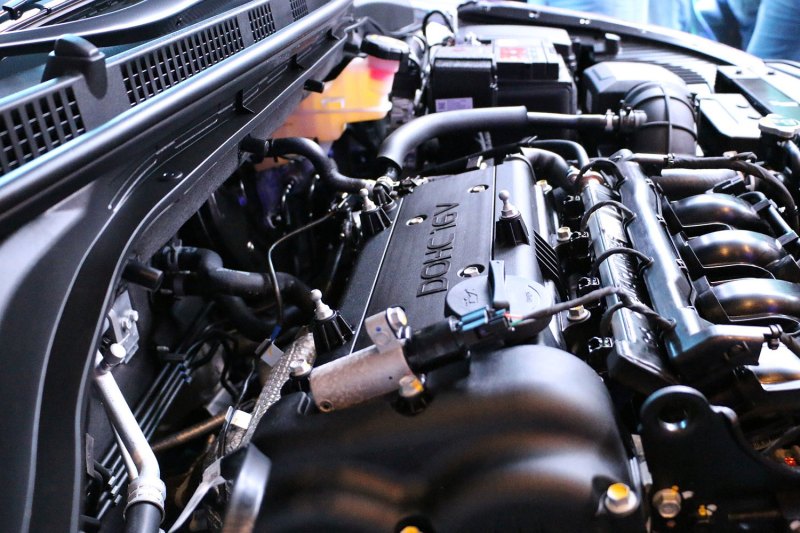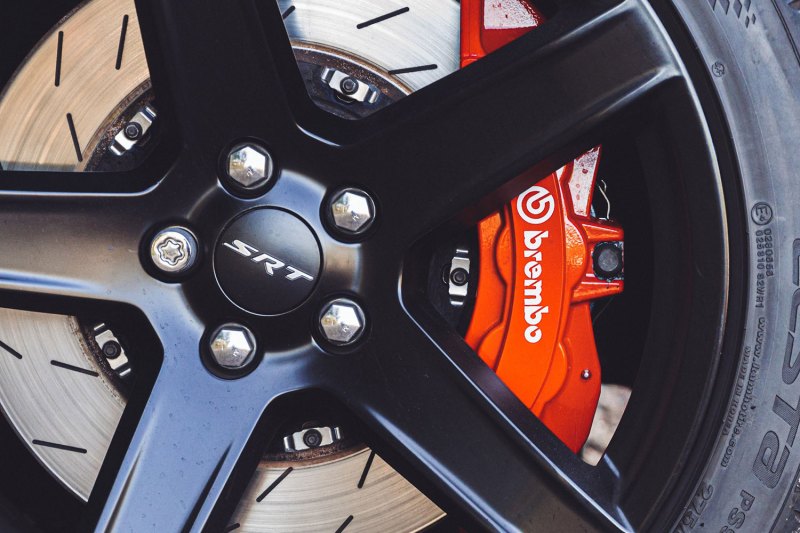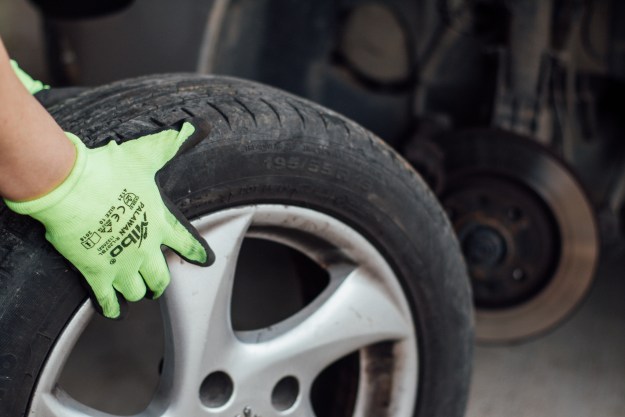Modern vehicles are more complicated than those of decades past. Still, most manufacturers make it easy for owners to perform routine maintenance tasks on their own. If you like keeping your car clean and ready to roll, you’re probably motivated enough to tackle the small things on your own without taking it to a mechanic for everything. Things like changing your oil and replacing your vehicle’s air filters can be done with little automotive knowledge and few, if any, tools. The same can be said for low brake fluid. Checking brake fluid isn't complicated. All you really need is two hands and around 10 minutes.
What exactly is brake fluid? Basically, brake fluid is a type of hydraulic fluid used in most cars, motorcycles, and some trucks. Low brake fluid means there might be a leak or an issue with your vehicle's braking system. Unlike oil, brake fluid doesn't get used up with everyday driving. Manufacturers typically recommend checking brake fluid every two years or 30,000 miles and yes, it's something you can DIY.

How to check the brake fluid level
Checking your car's brake fluid level is almost as easy as refilling your windshield washer fluid. If you can open your vehicle’s hood and unscrew a cap, you’ve got all the skills you need. A word of caution before getting started though brake fluid can be highly toxic and corrosive. Avoid getting it in your eyes and be sure to wash your hands thoroughly after checking the brake fluid level. Since it's caustic avoid spilling any on your vehicle’s finish or engine components. Ready to check your vehicle’s brake fluid level? Let’s get started!
Step 1: Open your vehicle’s hood and locate the master cylinder. It's a small, capped reservoir usually located near your vehicle’s firewall at the back of the engine compartment. The master cylinder is typically on the driver’s side of the engine bay in front of where your car's brake pedal is mounted. If you’re having trouble finding it, consult your owner's manual.
Step 2: Next, check the brake fluid level. Most newer vehicles from the mid-1980s and later have a translucent plastic reservoir. So, it’s easy to see the “full” line without removing the screw-off cap. Most older cars made before the early 1980s relied on a metal reservoir topped with a spring-loaded clamp. In this case, use a shop rag to wipe away any dirt from around the cap. Even a small amount of debris inside the master cylinder can damage your car’s delicate braking system. Use a screwdriver or good multi-tool to pry the spring-loaded clamp to one side and lift the cap. Look for the “full” line inside.
Step 3: If you discover low brake fluid, regardless of the age of your vehicle, add brake fluid. Some vehicles have a dual-chamber reservoir, in which case you should fill both to “full.”
Step 4: Wipe away any spilled or excess brake fluid immediately.
Step 5: Replace the reservoir cap.
Step 6: If your reservoir is empty or excessively low, this most likely indicates an issue with your brake system. Be sure to consult a mechanic immediately since your vehicle may be unsafe to drive.

How to check your car's brake fluid
Brake fluid contains additives to inhibit rust and corrosion of critical brake line components including the calipers, steel brake lines, and antilock brake system. While you’re under the hood checking the master cylinder, it’s important to note not only the level but also the quality and pH balance of your car’s brake fluid. This can be a little trickier than merely checking for low brake fluid. Still, it’s straightforward with a readily available brake fluid test kit purchased from any automotive store or online retailer. With the master cylinder cap still off, follow these two additional steps.
Step 1: Put on plastic disposable gloves to check brake fluid. Remember brake fluid is toxic and corrosive.
Step 2: Open the brake fluid test kit and remove a single disposable strip.
Step 3: Dip the strip into your vehicle’s brake fluid.
Step 4: Shake off any excess.
Step 5: Wait 60 seconds.
Step 6: Compare the color on the strip to the guide/chart included with your brake fluid test kit. This will indicate when and if it’s time to change the brake fluid.

When to schedule a brake fluid flush
Like changing your oil and replacing your car’s air filters, when to schedule a complete brake fluid flush depends on your driving habits and your car’s year, make, and model. Most manufacturers recommend this service every 24 months or 30,000 miles, though this can vary. Consult your owner's manual to be sure. Also, know that this is just a guideline. The only way to be sure is to check your car’s brake fluid quality is with a proper testing kit or to visit a qualified mechanic.

Know the warning signs of low brake fluid
During regular operation, your vehicle should not lose brake fluid. Levels may drop slightly as brakes wear over time. But if the level has fallen significantly since your last fluid level check or full service, it’s time to see a mechanic. Minor issues are much easier and less costly to repair than dealing with total brake failure down the road.

Know your brake fluid type
Every manufacturer recommends a specific type of brake fluid for their vehicles. This is usually — though not always — DOT3 or DOT4 and noted on your vehicle’s brake fluid reservoir cap. Consult your owner's manual if you can’t find the recommended brake fluid type. Never mix and match brake fluid types or use a brake fluid that’s not designed for your vehicle’s brake system.
Going to a mechanic is expensive. So, if there are simple checks you can do yourself, it will help extend the life of your vehicle and save you money. Low brake fluid can be a problem. It's an indication there may be an issue with your braking system. Learning how to check brake fluid isn't difficult and it is something you can definitely DIY. If you find your brake fluid is almost gone or extremely low. Fill it up and check with a mechanic.
Editors' Recommendations
- How to clean headlights using these popular methods
- These are the mistakes to avoid when you wash your car
- Bridgestone Tires’ new Potenza Sport AS promises better wet and winter condition performance for true all-season tire
- Costco has a secret online store, Costco Next, that any member can access – here’s how
- Wash, wax, repeat: Polish and protect your precious ride with the best car waxes



